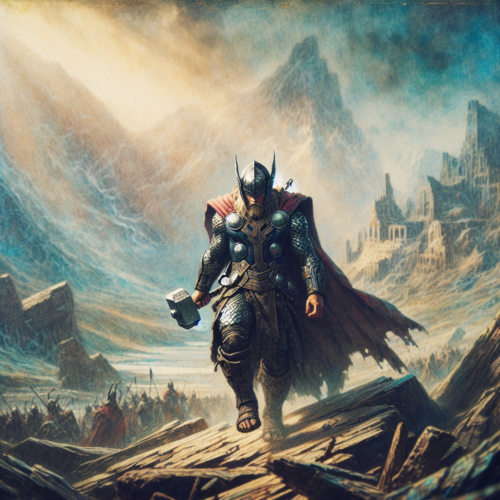Thor might easily be the most well-known god in Norse mythology. He is the god of thunder, but also covers many other domains as well. He is also the god of strength and protector of Midgard, Asgard, and all sacred rituals and domains.
Thor is the son of Odin and Jord, a giantess that embodies the earth and strength. His mother does not appear in stories often, but Thor sure does. He is most often accompanied by Loki, with whom he has a love-hate relationship. Loki can be considered to be his uncle since he shares a blood bond with Odin. Thor has married Sif, with whom he has a daughter, Thrud. The god of thunder is a true son of his Odin, as he has fathered two sons on a giantess (Járnsaxa). Their names are Magni and Modi.
Thor hates giants and giants hate Thor. Giants are generally considered a threat to both Asgard and Midgard, the realms of which Thor is the protector, so they would often get in fights with one another. Thor often travels into Jotunheim and does not wait for the giants to invade Midgard or Asgard. All in all, this god killed masses of giants throughout mythology.

Symbolism
He possesses many magical artifacts that assist him in his adventures. The most famous one is Mjölnir, a warhammer that always returns to his owner when thrown at an enemy. The dwarfs Brokk and Eitri forged it using a dying star. This hammer is indestructible and is the reason why many giants have lost their lives at the hands of Thor. Moreover, the god of thunder has a belt that enhances his (already impressive) strength. Finally, Thor also rides a chariot that is pulled by two immortal goats. In that chariot, he is sometimes accompanied by Thialfi, his squire.
Thor is fated to perish during Ragnarok. Even though he slays the giant Jörmungandr, he ends up being poisoned by the serpent’s venom. His legacy will live on through his sons, Magni and Modi, who will wield Mjölnir after surviving Ragnarok.
